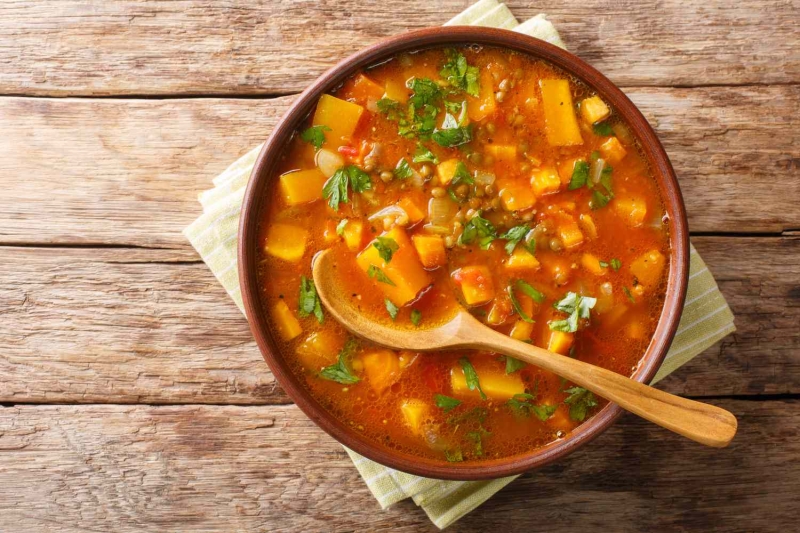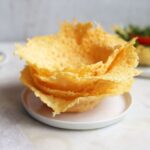What’s the difference between soup and stew? The most common explanation makes a simple distinction based on the amount of liquid in the dish. The theory goes: if there’s more liquid it’s a soup, and if there’s less it’s a stew. But the cooking methods are actually the deciding factor when labeling a dish soup or stew.
Soup Vs. Stew
Using the popular liquid distinction, soups and stews represent different points on a single continuum of "thickness," with thin broths and clear noodle soups at one end, and thick, hearty beef stews at the other. The problem with this idea is that it's impossible to pinpoint the exact thickness (or lack thereof) that marks the boundary between soup and stew.
If you can't define the difference, then the words "soup" and "stew" cease to have any meaning with respect to one another. A soup is just a thin stew, and a stew is just a thick soup. Fortunately, we can distinguish soup from stew by looking at the cooking method used to prepare each one. Soups are simmered while stews are braised.
What Is Soup?
There are two broad categories of soups: clear soups and thick soups. In general, the basic method for preparing all soups is to start with a liquid and add ingredients, and they are all generally simmered uncovered.
Clear Soups
Clear soups include dishes like vegetable soup, chicken noodle soup, and beef-barley soup. They’re made from clear stock or broth and they’re unthickened. Usually, they’re prepared by sauteeing or sweating aromatics like onions and celery then adding the stock or broth followed by the remaining ingredients. The soup is simmered until the vegetables are cooked through, with cooked meats added at the end (although fish and seafood, which cook quickly, can be added raw). Cooking time is generally relatively short.
Thick Soups
Thick soups include cream soups, pureed soups, bean soups, chowders, bisques, and some chilis. Cream soups are either made from a veloute sauce, bechamel sauce, or with stock that’s thickened with roux or a puréed main ingredient such as potato, broccoli, or mushroom and finished with cream or a mixture of egg and cream called a liaison at the end.
Puréed soups are similar to cream soups, but instead of thickening with added starch, their thickness comes from the starches of the ingredients themselves, such as carrots, potatoes, or rice, and are puréed before serving.
Chowders are almost always made with potatoes and milk along with some sort of fish or shellfish and they’re typically chunky. Bisques are made by simmering the shells of crustaceans and are finished with milk or cream. Bean soups are prepared essentially the same way as clear soups, but because the starches in the legumes thicken the soup and because they have longer cooking times, they’re considered thick, not clear.
What Is Stew?
Stew is made using a cooking technique called braising. In fact, from a culinary standpoint, the words stewing and braising mean the same thing. Braising is a moist-heat cooking technique that breaks down tough cuts of meat and turns them tender and succulent. It’s done at low heat over a relatively long period of time in a pot with a lid on, either on the stovetop or in the oven.
Meats like beef chuck, beef short ribs, brisket, oxtail, pork shoulder, and lamb shanks are great for braising, as are dark-meat cuts of chicken like thighs and drumsticks. Depending on the meat, cooking time can vary from one to several hours.
Traditionally, the meat is first browned in hot fat before covering it either partially or completely with stock or some other flavorful liquid along with flavorings and seasonings and simmered at a low temperature, ideally between 205 and 210 F. This is the temperature at which the connective tissues in meat break down and turn into collagen, which thickens and adds body to the cooking liquid. Sometimes the meat is coated in flour before browning it, which brings additional thickening.
If you’re making stew as opposed to pot roast, you would cut your meat into smaller pieces, but the cooking method is the same. Vegetables like carrots and potatoes would go in towards the end of the cook time so that they don’t get mushy.
What About Chili?
Chili is a special case that can fit into either or both categories depending on how the meat is prepared. Sometimes chili is prepared by braising a large cut of beef, such as beef chuck, or chunks of beef, and the beans and other ingredients added towards the end. In this case, it’s a stew.
Other chili recipes are made with ground beef, which is browned on the stovetop and then the liquid and other ingredients are added after that. In this case, it’s soup.


